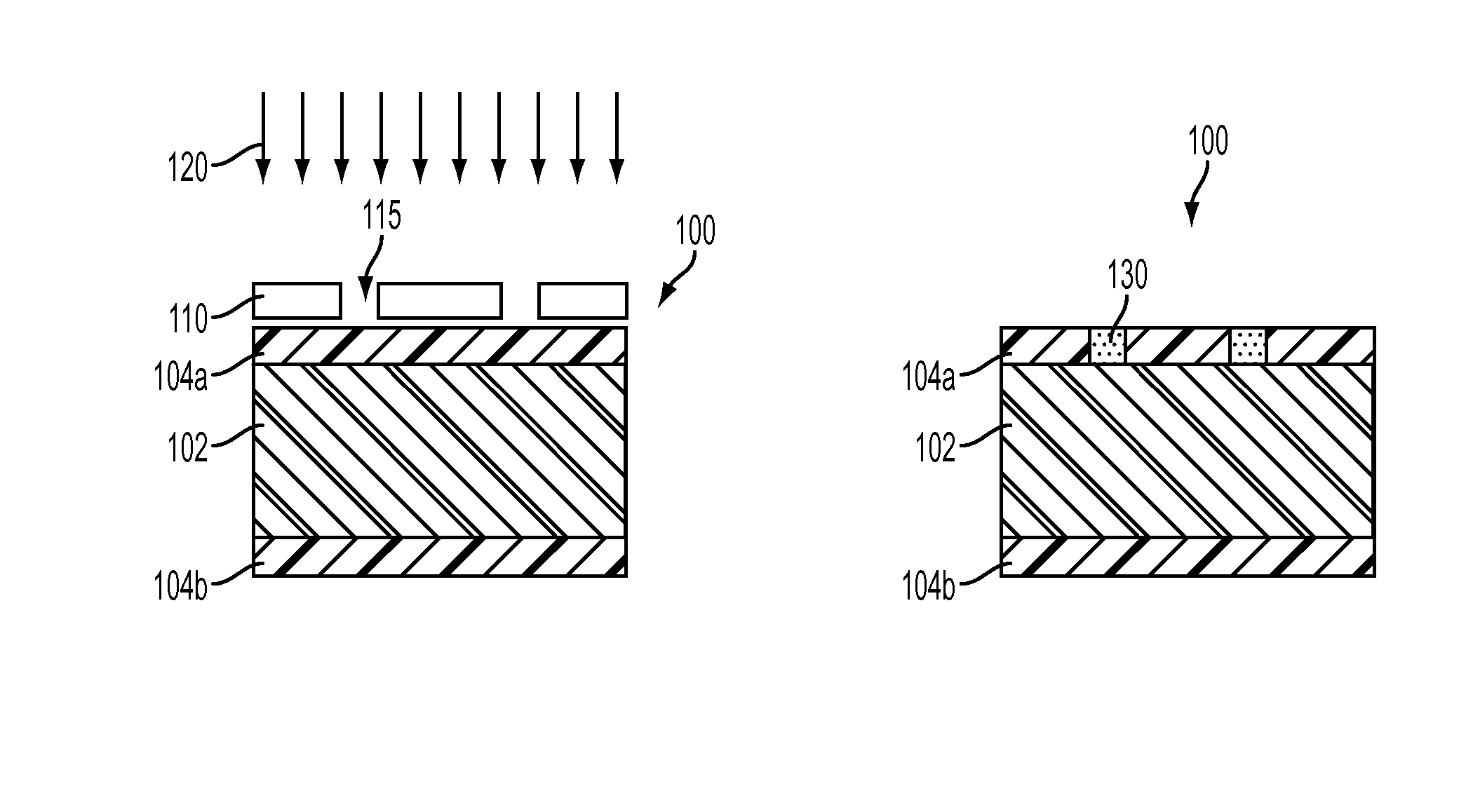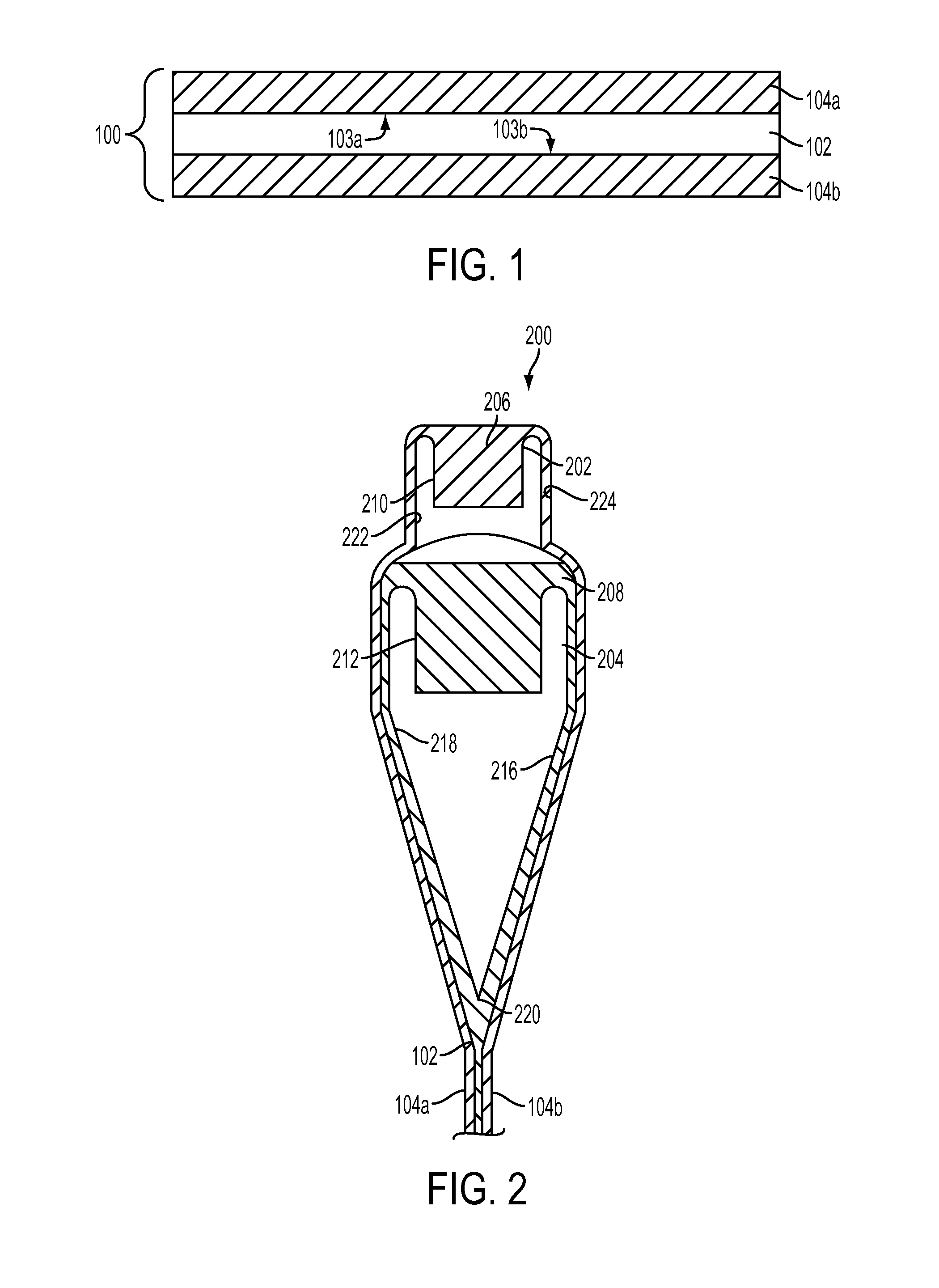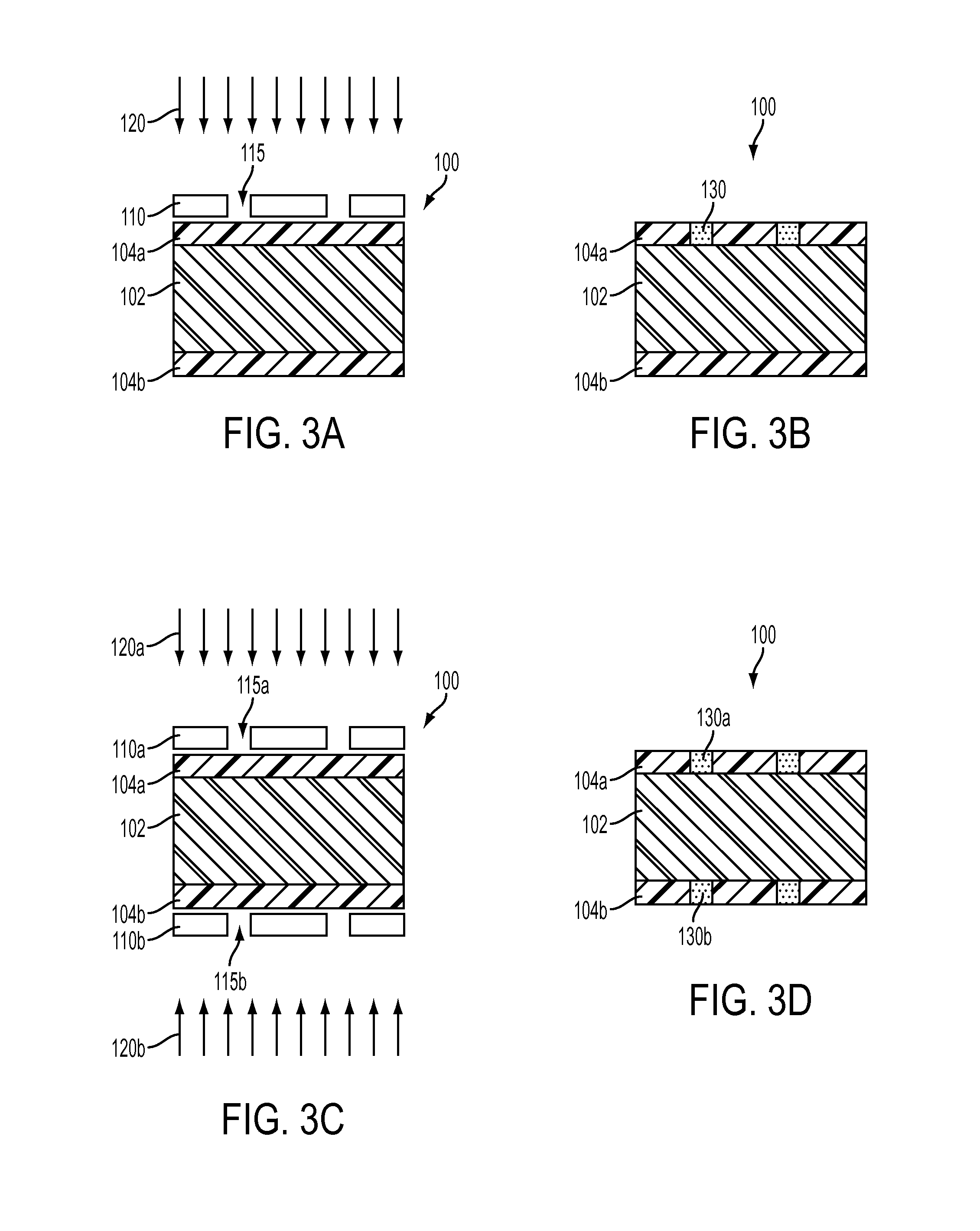Machining Of Fusion-Drawn Glass Laminate Structures Containing A Photomachinable Layer
a technology of fusion-drawn glass and laminates, applied in the direction of glass tempering devices, instruments, photomechanical devices, etc., can solve the problems of difficult and imprecise formation of structures such as holes and through-holes through laminates
- Summary
- Abstract
- Description
- Claims
- Application Information
AI Technical Summary
Benefits of technology
Problems solved by technology
Method used
Image
Examples
Embodiment Construction
[0017]Reference will now be made in detail to embodiments of methods for machining glass structures. First the glass structures themselves will be described with reference to FIGS. 1 and 2. Various methods for machining the glass structures will be described below with reference to FIGS. 3A-10E.
[0018]As used herein, the term “liquidus viscosity” refers to the shear viscosity of the glass composition at its liquidus temperature.
[0019]As used herein, term “liquidus temperature” refers to the highest temperature at which devitrification occurs in the glass composition.
[0020]As used herein, the term “CTE” refers to the coefficient of thermal expansion of the glass composition averaged over a temperature range from about 20° C. to about 300° C.
[0021]The term “substantially free,” when used to described the absence of a particular oxide component in a glass composition, means that the component is present in the glass composition as a contaminant in a trace amount of less than 1 mol. %.
[0...
PUM
| Property | Measurement | Unit |
|---|---|---|
| Thickness | aaaaa | aaaaa |
| Structure | aaaaa | aaaaa |
| Solubility (mass) | aaaaa | aaaaa |
Abstract
Description
Claims
Application Information
 Login to View More
Login to View More - R&D
- Intellectual Property
- Life Sciences
- Materials
- Tech Scout
- Unparalleled Data Quality
- Higher Quality Content
- 60% Fewer Hallucinations
Browse by: Latest US Patents, China's latest patents, Technical Efficacy Thesaurus, Application Domain, Technology Topic, Popular Technical Reports.
© 2025 PatSnap. All rights reserved.Legal|Privacy policy|Modern Slavery Act Transparency Statement|Sitemap|About US| Contact US: help@patsnap.com



